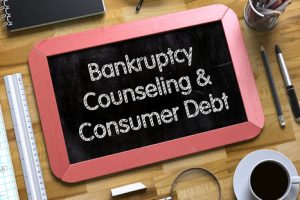Chapter 7 Bankruptcy: What You Need to Know

In board games like Monopoly, players who file bankruptcy are utterly defeated. They lose everything they have and cannot continue the game. Fortunately, the real world is a lot different. The Supreme Court has consistently stated that the Bankruptcy Code is designed “to grant a fresh start to the honest but unfortunate debtor.”
That’s the essence of a Chapter 7 Bankruptcy, which for some reason is nicknamed a liquidation bankruptcy. In just a few short months, debtors are free of unsecured debts, and they retain most or all of their assets in the process.
Protected Assets
The trustee (person who oversees the bankruptcy for the judge) may seize all the debtor’s nonexempt assets to pay the person’s debts. However, most people do not have nonexempt assets. The protected list generally includes:
- – Home equity,
- – Motor vehicles,
- – Retirement nest eggs,
- – Government benefits, including Social Security benefits, and
- – Personal property.
Even if an asset is not on the protected list, the trustee can only seize it if seizure would be in the best interests of the creditors.
Assume David Debtor has a fishing boat which is not on the protected list. Its fair market value is $2,000, and David still owes $1,000. If the trustee took the boat, the trustee must pay off the loan balance, make any necessary repairs, store the boat, market the boat, and probably sell it at a discount. Since there would be little or nothing left, most trustees would leave David’s boat alone.
The Chapter 7 Process
As soon as debtors file their voluntary petitions, the Automatic Stay usually takes effect. Section 362 of the Bankruptcy Code immediately stops adverse actions like:
- – Foreclosure,
- – Repossession,
- – Collection lawsuits, and
- – Wage garnishment.
In most cases, the Automatic Stay remains in effect as long as the bankruptcy is pending. The Stay applies whether or not the debt is dischargeable in bankruptcy.
The trustee meeting is the second phase of a Chapter 7. At the 341 meeting, the trustee verifies the debtor’s identity, reviews some basic financial documents, like recent tax returns, and looks for any red flags.
An attorney is important in the first two phases and critical in the third phase. Many bankruptcies include back taxes, student loans, and other debts which are only dischargeable in some situations. Aggressive legal representation is the only way to protect your rights.
Furthermore, an attorney can negotiate with creditors to obtain a lower interest rate or other more favorable terms.
Debt Discharge
In most cases, about six months after debtors file their petitions, the judge signs a discharge order. This order applies to most unsecured debts, such as:
- – Credit cards,
- – Medical bills, and
- – Payday loans.
The discharge order eliminates the legal obligation to repay the debt, but does not affect the collateral consequences of debt. For example, if David owes back tuition, he no longer has to pay it, but the school can continue to withhold his transcript until he makes suitable arrangements.
Contact Assertive Lawyers
Chapter 7 eliminates most unsecured debts. For a free consultation with an experienced Chicago Chapter 7 bankruptcy attorney, contact the Bentz Holguin Law Firm, LLC. After-hours visits are available.


